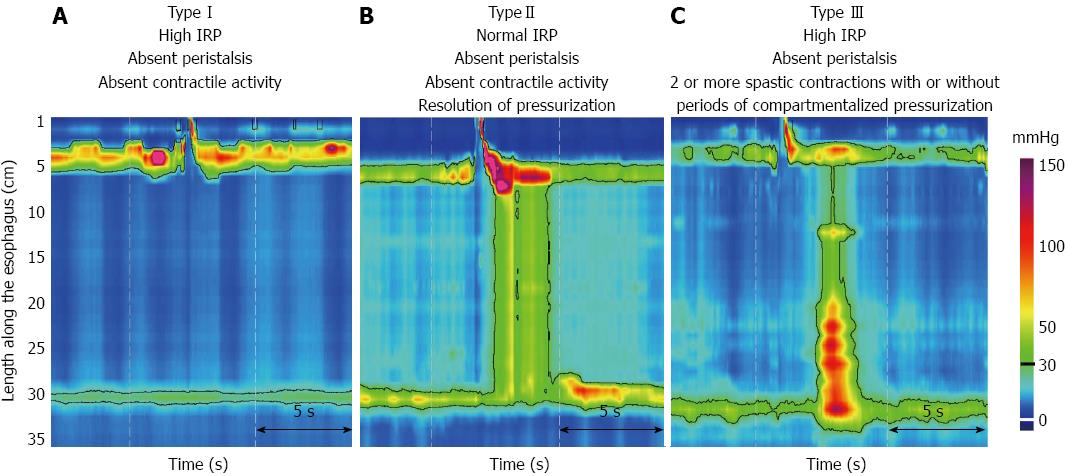Copyright
©2013 Baishideng Publishing Group Co.
World J Gastroenterol. Sep 7, 2013; 19(33): 5421-5429
Published online Sep 7, 2013. doi: 10.3748/wjg.v19.i33.5421
Published online Sep 7, 2013. doi: 10.3748/wjg.v19.i33.5421
Figure 1 High-resolution manometry with pressure topography plotting classified achalasia into three subtypes.
A: Type I (classic achalasia) refers to patients with absent of peristalsis, no pressurization within the esophageal body, high integrated relaxation pressure (IRP); B: Type II (achalasia with compression) refers to patients with absent of peristalsis, and contractile activity, panesophageal pressurization > 30 mmHg, and high IRP; C: Type III patient (spastic achalasia), associates with absent of peristalsis, and two or more spastic contractions with or without periods of compartmentalized pressurization and a high IRP.
- Citation: Chuah SK, Chiu CH, Tai WC, Lee JH, Lu HI, Changchien CS, Tseng PH, Wu KL. Current status in the treatment options for esophageal achalasia. World J Gastroenterol 2013; 19(33): 5421-5429
- URL: https://www.wjgnet.com/1007-9327/full/v19/i33/5421.htm
- DOI: https://dx.doi.org/10.3748/wjg.v19.i33.5421









